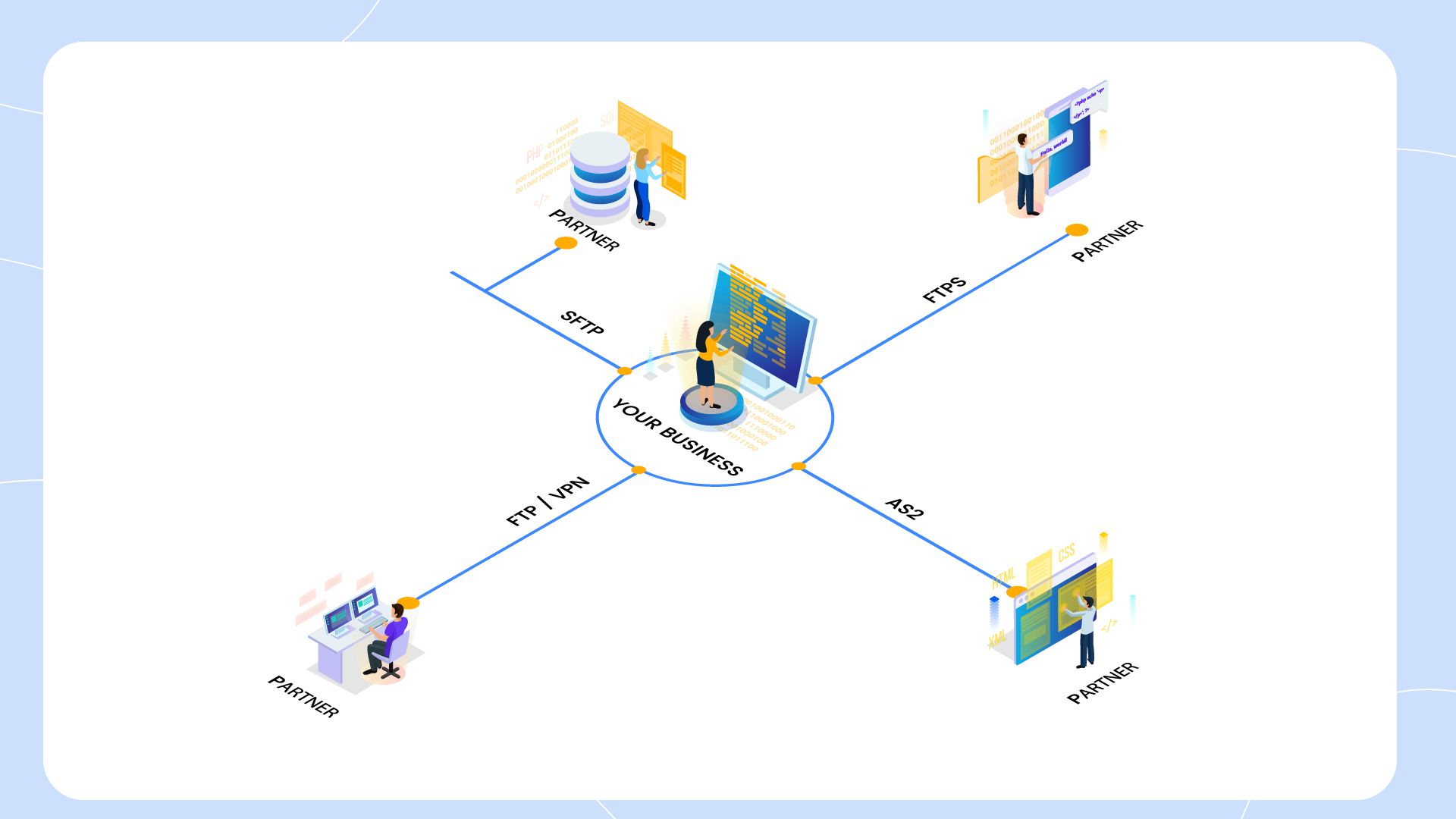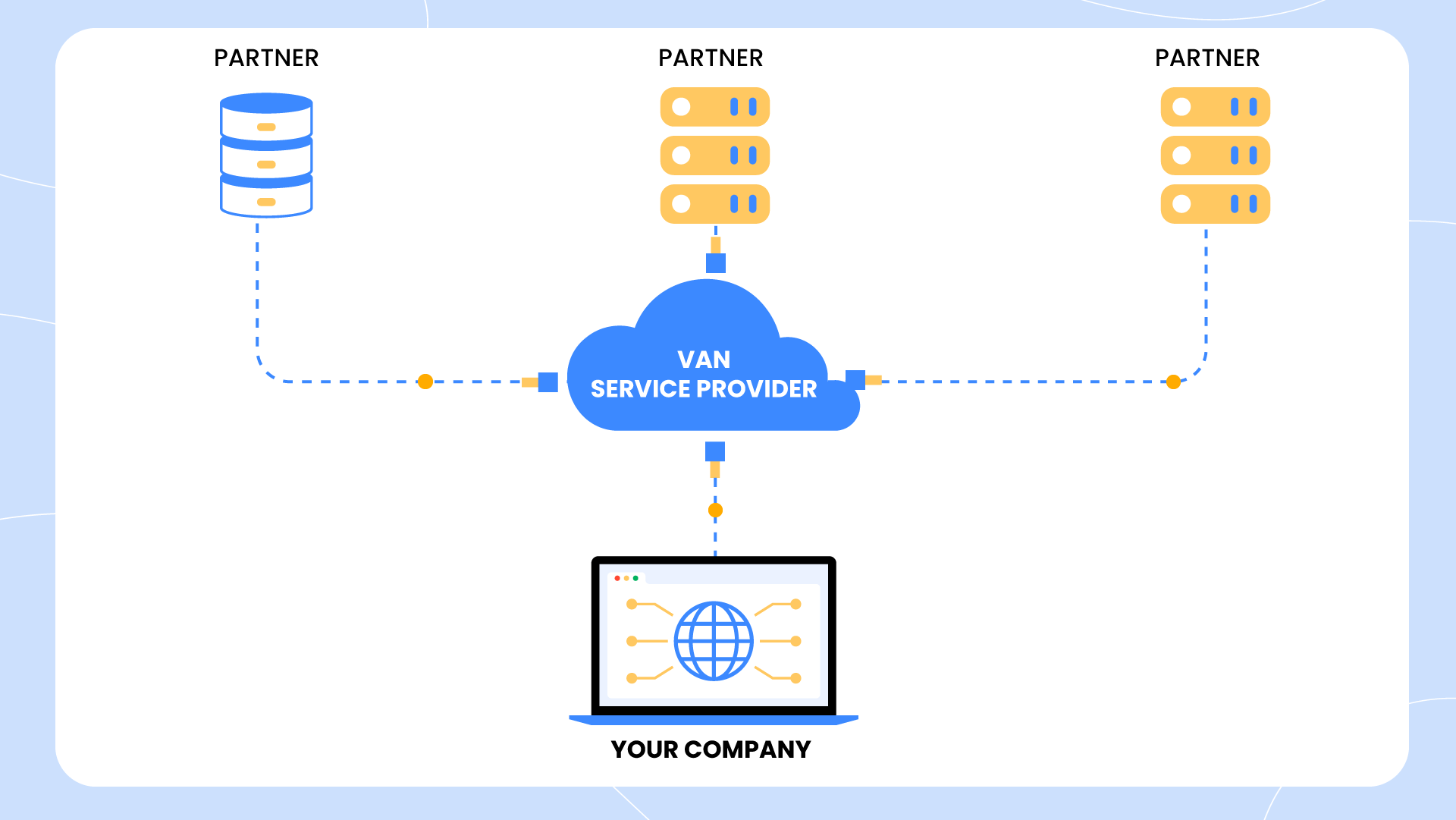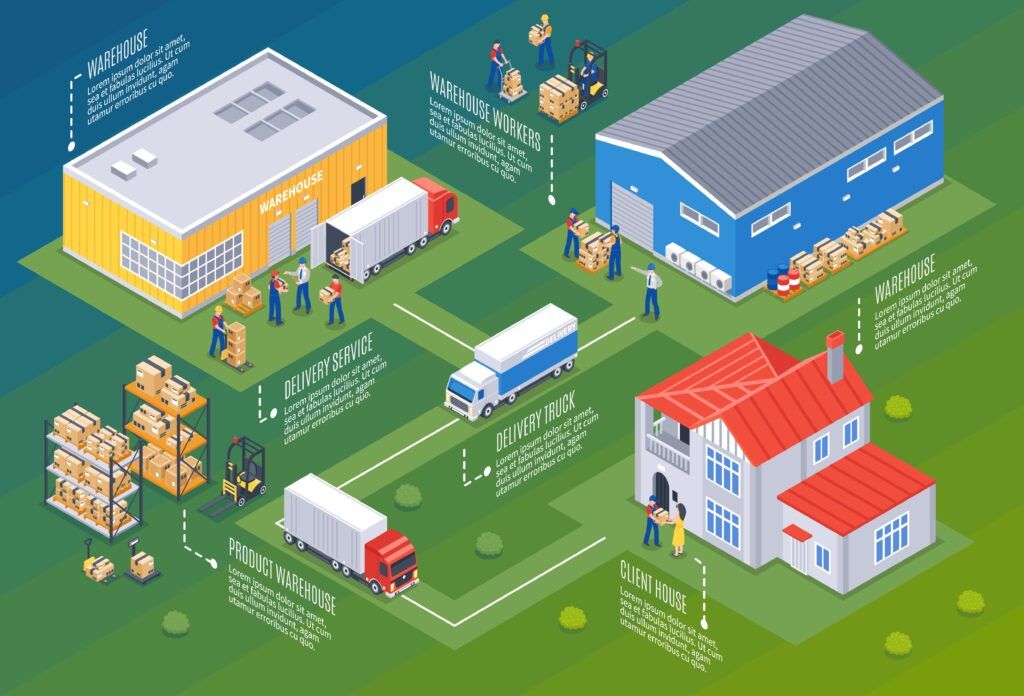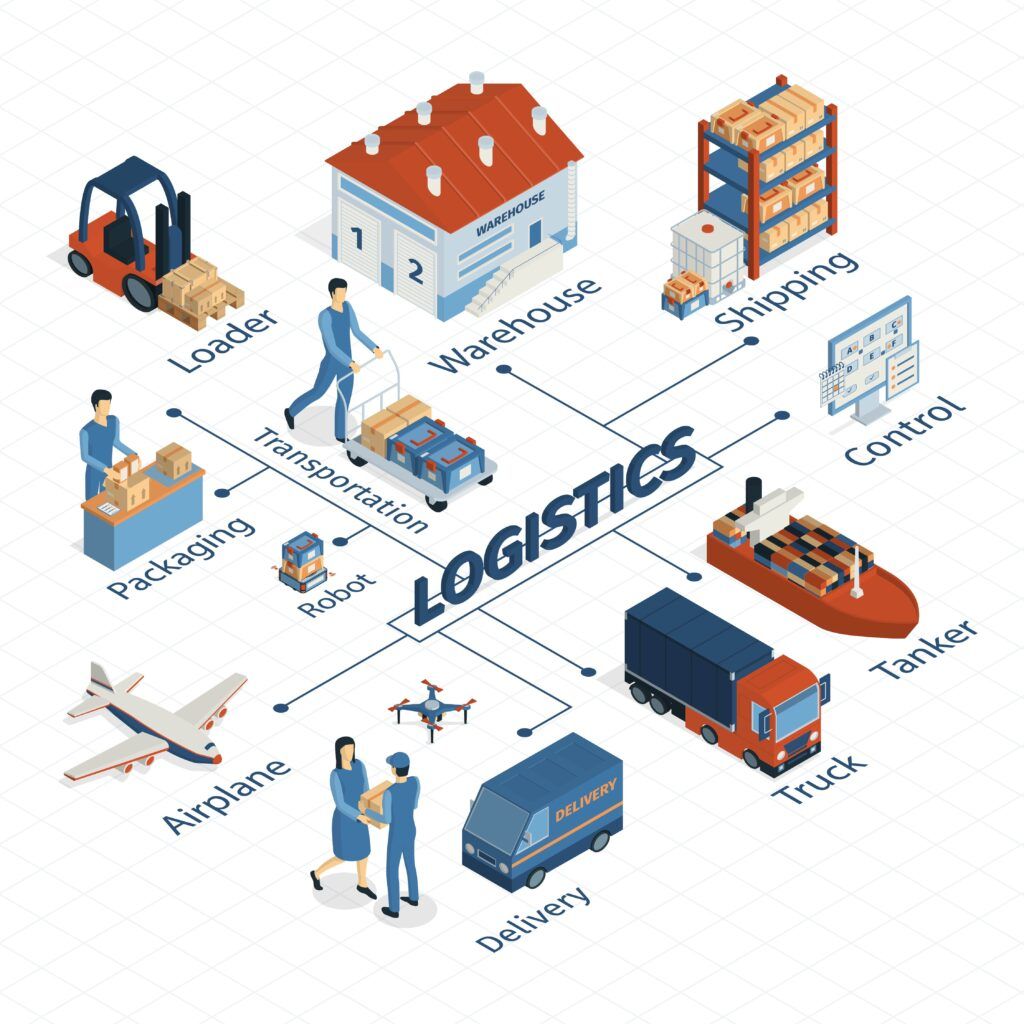Electronic Data Interchange (aka EDI) is the term that describes the standard of exchanging business information via computers instead of using paper documents. According to Gartner, this method has been applied to over 200,000 organizations worldwide, and it is one of the B2B components of electronic commerce. While similar to EDI, API lacks a standard for users, making it hard for different businesses to share information via APIs.
In your business, you have to deal with many types of data, such as data from operational processes, supporting processes, and management processes, to ensure that everything runs smoothly and is maintained. However, if businesses just store them on paper, it will cause many serious problems, including wasted storage space, misplaced information, increased security risks, lack of document searchability, the threat of natural disasters, environmental damage, and editing problems. So, in this article, let’s explore all the information about What is EDI.
Type of EDI
Direct EDI/Point-to-point EDI
Direct EDI or Point-to-point EDI describes the secure connection between a business and a trading partner via the same EDI protocol and begins communication. For each EDI, the organization must charge for the hardware resources required, mapping fees, ongoing maintenance fees, and software to translate.
One organization can manage hundreds of connections between them and each business partner. However, it can become more complex and resource-intensive if each partner uses a different communication protocol. Therefore, you need support from an EDI solution provider to optimize business resources, which we will mention at the end of this page.

EDI via VAN
The EDI value-added network (EDI VAN) is one of the most popular options to facilitate electronic data interchange. It offers a private B2B electronic communications network via a third-party provider. EDI VAN describes the connections between a business and all trading partners through the EDI solution provider. The provider will create a general mailbox for organizations and all partners to exchange their needed documents.
Applying the EDI VAN will help businesses reduce the resources needed to exchange data with their partners. A provider has all the necessary features to format and verify the data before transferring it to the partners.

EDI via AS2
Applicability Statement 2 (AS2) is a communication method that transmits information using an HTTP-based protocol. Through two internet-connected computer systems, a server and a client, AS2 will create a security line to transmit the desired data in a one-way direction.
Sometimes, people might be confused about the extent of AS2 EDI. It only describes the status that the EDI document was transmitted successfully and does not include the EDI document forward.
EDI via FTP/VPN/SFTP/FTPS
The File Transfer Protocol (FTP) is the first direct communication method for exchanging EDI documents between an organization and its trading partners. However, this protocol does not provide security for documents when exchanged with other companies via the internet. Therefore, organizations using FTP need to coordinate with VPN (Virtual Private Network) software to provide the document security layer.
Both SFTP and FTPS are secure internet protocols for electronic data exchange. Organizations that use those communication methods can directly connect with their partners or through third-party EDI solution providers. The major difference between them is the security level when sending files via the internet. The Internet Engineering Task Force developed the SFTP security layer.
All of the above transfer protocols provide neither non-repudiation nor message management. It does not support document confirmation or confirm to the sender that the document was successfully received and decrypted. For that reason, these communication methods are no longer popular.
Web EDI
Web EDI is how to conduct EDI using an internet browser. It acts as a simulator that copies all paper-based documents to the web form. All information will be converted into an EDI message and sent through FTPS, HTTPS, or AS2 using the internet.
Using web EDI allows businesses to connect with partners who live in countries that limit IT and EDI skills or don’t need to install and manage any EDI software.
Mobile EDI
Mobile EDI is a system that can access EDI data from mobile devices. It allows businesses to send and receive EDI documents on their mobile phones or tablets.
EDI Outsourcing
EDI outsourcing is a third-party provider solution that helps businesses implement EDI with their trading partners. The provider will offer a platform that can be customized to the data exchange requirements. Businesses can save time and money by not investing in EDI infrastructure, but they can still use high-level skills to deliver data.
EDI Software
The EDI software is a hosted EDI solution specially built to handle the key EDI functionalities. It will help businesses transfer EDI documents to partners that follow a unified format or template. EDI software offers the ability to standardize, send, and receive documents on the network. Besides, it integrates EDI with the business back-end and processes.
EDI components
Standard Document Format
It is a standard document format that makes it easy and correct for two parties to communicate with each other. The documents will be defined as segments of special format, structure, and content to meet the data interchange needs.
Document types
- UN/EDIFACT
- TRADACOMS
- ANSI X.12
- VDA
- UBL
EDI Translator and EDI Mapping
The EDI translator is an EDI translation software that converts raw data into meaningful information according to the standard document format. It also converts an EDI document into business data. Depending on the budget and needs of the company, an EDI translator may be created internally or supplied by third parties.
The workflow of the EDI interpreter is as follows:
- Once the organizer sends the business documents, the EDI translator will identify and segment the necessary information to meet communication requirements.
- Retrieve the needed document and convert it into an EDI based on each requirement.
- Submit a request to the trading partners.
EDI mapping is a conversion process that offers the ability to translate EDI messages into different languages that are suitable for technical environments, such as an ERP system.
Communication Software
Communication software is an application or program to access and transmit files from one system to another for EDI messages based on standard document formats. Additionally, it can facilitate text, video, audio, or other connections between various computers or mobile devices.
EDI communication software plays an important role in a modern e-business environment, setting up reliable and efficient EDI file exchange.
Communication Network
An EDI communication network offers a direct connection between trading partners for business EDI document exchange. It includes three components:
- Modem-a hardware device to transmit EDI data.
- VAN-a connection network between an organization and another.
- Point-to-point link – a direct communication line between two systems.
The Benefits of EDI
Better business efficiency
The team can focus on the more crucial activities thanks to exchanging electronic documents. In addition, lower costs, fewer human errors, and quicker processing all help businesses run more smoothly and produce more. Additionally, any data essential to corporate operations is protected and processed in real-time. Besides, EDI provides a high-security level that ensures business documents will be private and secure.
Lower costs
Without electronic data interchange, the company must spend a significant amount of money on manual document management processes. It includes the cost of paper, printing, postage, storage, or employees’ salaries to enter, fill out, copy, review, and retrieve documents. Therefore, applying EDI is a great option to save on operational costs, such as materials, resources, administrative, and maintenance expenses. Besides, it makes sure that all daily activities work automatically and efficiently.
Better relationships
Using an EDI method, organizations can keep good relationships with their trading partners. They can minimize the delayed payment of Advance Shipping Notices (ASN), orders, and invoices for their suppliers and customers. All procedures will be carried out efficiently and precisely. Additionally, businesses that fully comply with EDI will have greater options to expand, combine, and add new trading partners, as well as broaden their partner networks to add new suppliers and clients quickly.
Strategic benefits
All transaction statuses are available in real-time via EDI, helping entrepreneurs make informed and fast decisions. It enables companies to adjust to changing consumer demands and market trends. Additionally, it gives companies the ability to speed up the supply of new products and enhance existing products.
As we mentioned, EDI provides a standard corporate language for communication, which streamlines its efforts to expand into new regions and markets.
The environment benefits
Altering paper-based documents into electronic data significantly reduces paper usage and the amount of CO2 released into the environment. It not only saves the business budget but also promotes corporate social responsibility.
EDI Use Cases
Thanks to the useful EDI advantages, it’s been applied to various fields. For example, supply chain, healthcare, logistics, accounting, and aviation. Let’s explore how valuable EDI is in each field.
Supply chain
In the supply chain, EDI has significantly contributed to pushing business growth and boosting customer experience. It allows organizations to rapidly, correctly, and uninterruptedly transfer EDI documents to trading partners. EDI platforms or services are considered core elements in supply chain operations. All EDI transactions now automatically occur in real-time, identifying and processing errors accurately and quickly. EDI also contributes to B2B integration via standardized digital data transformation.
You can see EDI in the following activities, often highlighted in aviation studies:
- Purchasing
- Order fulfillment
- Shipping confirmations
- International orders
- Part of order fulfillment

Healthcare
In the healthcare industry, EDI enables institutions, insurers, and patients to communicate data using standardized formats securely. It makes it easier for all organizations to transmit documents using the HIPAA EDI or ASC X12 protocols, such as health plans clearinghouses or care providers. The introduction of EDI has helped to eliminate worrying issues such as expensive IT expenses, poor interoperability, conversion errors, and security gaps.
You can see EDI in the following activities:
- Exchanging patient health information
- Health insurance processing
- Prescription information exchange

Logistics
In logistics, EDI is a standard protocol for data exchange, supporting organizations with complicated logistic strategies to improve operational efficiency, increase visibility into their supply chain, or strengthen customer relationships. It allows suppliers to notify the product’s delivery status upon arriving at their warehouse. Besides, the transportation agencies will receive all the distributed orders from businesses in real-time. Some EDI activities can be seen in logistics, such as:
- Scheduling shipments
- Tracking goods

Accounting
In accounting, EDI facilitates businesses that can communicate with each other without paper exchange. Through common EDI protocols, all purchases and invoices will be prepared, handled, and transferred between two computer systems, which minimizes or eliminates the manual steps in the accounting cycle. You can see EDI in the following activities:
- Generating invoices
- Creating audit trails

Aviation
In aviation, EDI supports the exchange of data such as purchases, invoices, and others in the supply chain of suppliers, retailers, manufacturers, bankers, warehousing, logistics, and transport. As a result, organizations in the aviation industry can reduce inventory levels, save time, improve transaction processes, and reduce bottlenecks. You can see EDI in the following activities:
- Flight information exchange
- Passenger name records (PNRs)
- International compliance and standardization

The Challenge of Implementing EDI
The benefits of using electronic data interchange are clear. However, the successful implementation of EDI is a complex task involving considerable expense and effort. Some of these difficulties include integration flexibility, extensibility, ease of onboarding of trading partners, in-house knowledge, end-to-end automation, consistency across levels, and validation.
- Integration Flexibility: An organization needs an integration solution that supports multiple trading partners and allows them to adapt to different levels of integration with their business process.
- Extensibility: It is important to maintain systems to add more functionality in the future to expand the number of documents exchanged between organizations and trading partners.
- Easy onboarding of trading partners: If the system is complicated to implement, it will have many negative impacts on connecting with trading partners and achieving their business objectives.
- In-house knowledge: Having EDI knowledge plays an important role in implementing EDI accurately and preventing cheating from some providers who will take days to fix very simple issues.
- End-to-end automation: This solution may appeal to businesses with limited IT capabilities. End-to-end integration can be accomplished with a little bit more money by using a full-fledged EDI system.
- Consistency across levels: For their integration flows, many departments will have varied requirements so that a platform can support various needs.
List of EDI Solution Providers
EDI has become one of the important elements in businesses’ ecosystems for connecting with their trading partners. By researching, we compiled a list of EDI solution partners to help organizations implement EDI effectively and save business resources.
We will publish another article to compare the pros and cons of each provider.
Conclusion
Once again, electronic data interchange is the breakthrough solution that enables an organization to communicate with all trading partners via common protocols. In this article, we explored all the basic information about EDI. If you have questions about Electronic Data Interchange or integration requirements, please get in touch with us.